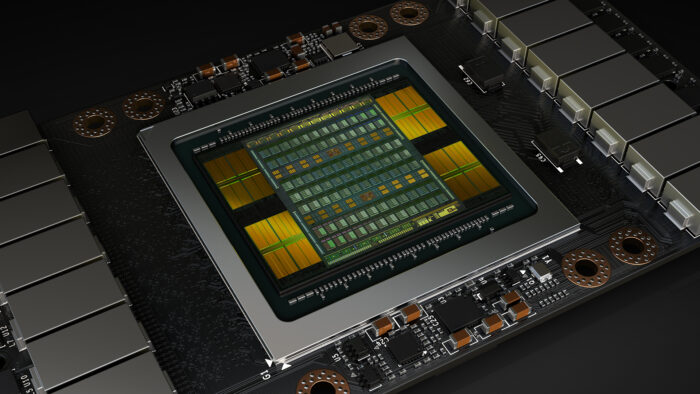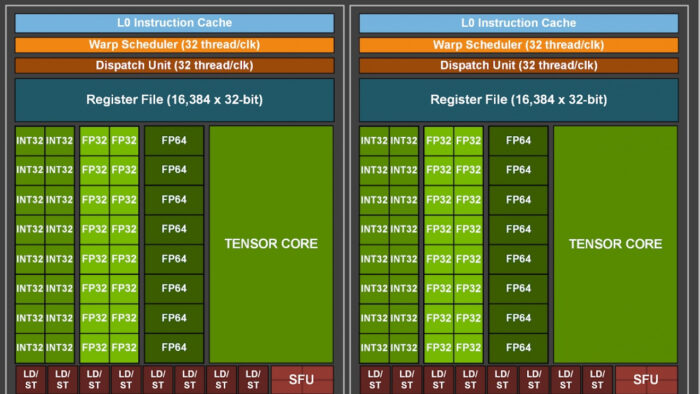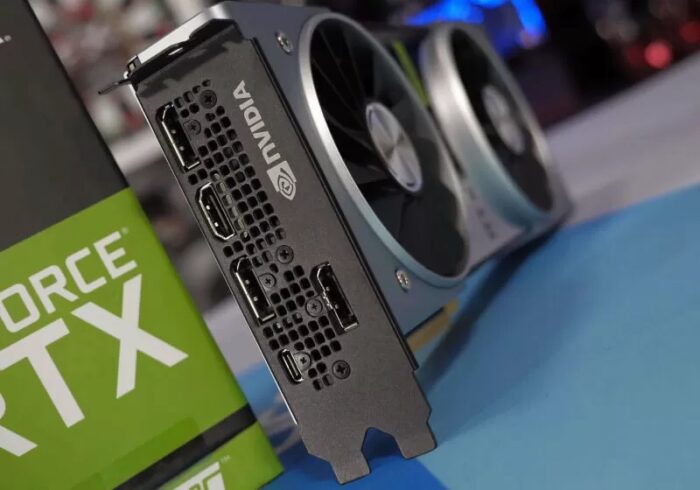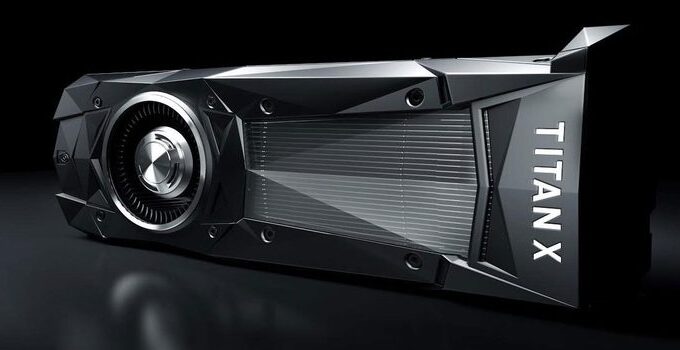You might have come across the word CUDA cores while looking at the specifications of any GeForce Graphics card. If you aren’t a tech person, you don’t know what does this means and how does it affect the performance of your graphics card.
Here in this article, I’m going to tell you each and everything about the CUDA Cores. By knowing all this, you would be able to get yourself an amazing graphics card that will perform so correctly that you will be amazed.
You will not only find the explanation of CUDA Cores in this article, but most of your questions will also answer here. So, hold on to this article for a while.
Table of Contents
The term CUDA Cores and its explanation:

Source: extremetech.com
CUDA is the acronym of Compute Unified Device Architecture. It accelerates computation processes. This technology is introduced for graphics cards by NVIDIA. More specifically, CUDA Cores is a specialized computer programming language that compels the Graphics card to carry out the tasks with higher performance.
CUDA helps researchers and software developers to feed C, C++, and Fortran code directly into the graphics card without converting it.
The number of CUDA Cores that are present in NVIDIA Graphics cards can range from 8 to 5700+. What do CUDA Cores do?
Some of the tasks that CUDA Cores do are the scenery in-game, drawing character models, or solving complex lighting issues and shading within an environment.
CUDA Cores are responsible for dealing with all the data that moves to the graphics card; the cores help to handle things, for example, the graphics in the video games.
CUDA Cores are parallel Processors. The cores are responsible for processing all the data that fed into the graphics card.
People often ask how CUDA Cores help in gaming. Let me elaborate on it to you.
What do CUDA Cores do in gaming?
Graphics processing requires a whole lot of numerous complex calculations. And this calculation is not supposed to happen one by one; everything carried out simultaneously. This is the reason why NVIDIA has so many CUDA Cores in one graphics card: To handle all the gaming situations in such a small amount of time. No one would like the stuttering of the screen in between a game.
The scenery, the lighting, the shadows, and the models, everything is the responsibility of CUDA cores.
Are CUDA Cores responsible for Graphics card’s Performance?

Source: tekdeeps.com
It is true when people say that CUDA Cores affect the graphics card’s performance but to an extent. The higher number of CUDA cores help to have an excellent performance. That is the sole reason why the number of CUDA cores in a graphics card is in thousands. But CUDA Cores is not the only thing that is responsible for the adequate performance of any graphics card.
Other things, such as VRAM capacity and Clock speed, are, however, more critical while looking for a more powerful graphics card. This is a common misconception that is making people astray from getting the most powerful graphics card.
This was the most important thing to know about the CUDA cores because depending totally on CUDA cores will not let you buy the best Graphics card.
What is Graphics card architecture?
Architecture is how various parts of the graphics cards joined together and tells the way how are they interconnected to each other. Knowing the architecture of the graphics card helps a lot in understanding the performance of the graphics card. The number of CUDA cores in a specific graphics card speaks out loud for its production.
CUDA Cores Vs. Stream Processors
Both of these terms are almost the same; the cores in NVIDIA Graphics card are called CUDA, and hearts in AMD graphics card are called steam processors. They have the same work; the only difference is the companies that launched them.
If you want me to compare them, then I cannot help you with this because they are from different companies and another thing, they have different architectures.
However, CUDA cores are better optimized, but there is no specific difference in terms of performance or quality.
How many CUDA Cores do you need?

Source: techguided.com
When people say you need a whole lot of CUDA cores to have the best performance of your graphics card, don’t believe them. This is only true for the graphics card that is from the same family. Let me further explain this. GTX 960 has 1,024 CUDA cores while the graphics card, which is more powerful, i.e., GTX 970, contains 1664 CUDA cores. Both of these graphics cards have the same architecture; that’s why the higher number of CUDA cores makes sense.
Let’s talk about the different architectures, 980 Ti from Maxwell contains 2816 CUDA cores, while Pascal 1080 features only 2560 CUDA cores. And according to performance, Pascal 1080 is a beast.
The actual object of telling you all this is that not only the higher number of CUDA cores is what matters the most, but you also need to look at other features too.
All this information also helps you to answer your question: Is higher CUDA cores better? Well, you know the answer now.
Choosing a Video Card with CUDA cores
The higher number of CUDA cores means the video card provides faster performance. NVIDIA offers a range of cards from 8 CUDA cores to 5760 CUDA cores. Graphics cards that have Tesla, Fermi, Kepler, Maxwell, and Pascal architecture support CUDA.
What matters the most – Number of CUDA cores or Speed of graphics card?
There are three things, which make the Graphics card the most powerful – VRAM, clock speed, and CUDA cores. The higher these things are, the better the performance.
When you get these things in your graphics cards, that too in higher quantity, then get ready to pay a lot. Because then the price would go up and up.
Make sure to have a look at videos and benchmarks of the performance of your graphics cards.
Which Graphics card has the most CUDA Cores?

Source: techspot.com
This question is frequently asked by some people, as they want the most CUDA cores possible.
GeForce GTX Titan Z has the highest amount of CUDA cores possible. It has 5,760 CUDA cores — the tallest amongst all graphics cards.
How Many CUDA Cores in NVIDIA GeForce GTX 1080 Ti?
One of the most famous, and the most reliable graphics card is GTX 1080 Ti; people want to know how many CUDA Cores does it have. Well, GeForce GTX 1080 Ti has 3584 CUDA cores, 224 texture units, and 88 ROPs. It has 11 GB VRAM and has a speed of 11 Gbps, one of the fastest Pascal card. It has a vase clock of 1,480 MHz and a boost clock of 1,582 Mhz.
NVIDIA CUDA Cores list
If you want a detailed list of number of CUDA cores in different graphics cards, then have a look on this;
This website has listed all the NVIDIA graphics cards and their specifications, along with the number of CUDA cores they are featuring.
Some Last words!
Above was everything you needed to know about the CUDA Cores. I hope now you have a clear understanding of CUDA cores, their work, and what difference do they make in graphics cards. I also tried to clear all the common misconceptions you had previously. Now you won’t be confused when looking at the specifications of graphics cards.
This article would also have helped you in buying a graphics card that has the most dominant performance. Tell me in the comments section below if you are facing any problem or have a question. I would hear it happily and try to resolve it as soon as possible. Meanwhile, I’ll be updating this article, if I found any other useful thing about CUDA cores.
Best of luck!



![Asus FX502VM Review: A Budget Gaming Laptop? [2023 Guide] Asus FX502VM Review: A Budget Gaming Laptop? [2023 Guide]](https://reviewspapa.com/wp-content/uploads/2018/10/1234-211x150.jpg)


